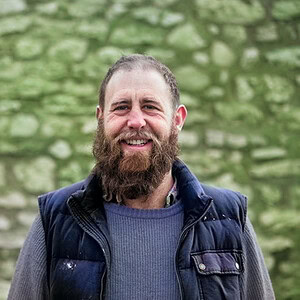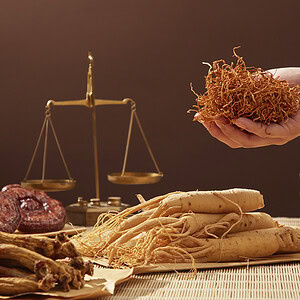Danish chef Mikkel Karstad trained with Gordon Ramsey and pioneered Nordic food in the early 2000s. Now, he’s a father of four, a forager and the author of several cookbooks.
What are the essential principles of Nordic eating?
“It’s about eating local and seasonal food. That’s the main thing. That’s healthy for yourself, but it’s also very healthy for the environment, and it’s cheaper to eat food that’s growing nearby.
“If you eat following the season, you eat a lot of different things, you get a lot of different flavours, you get a lot of different fibres, and a lot of different vitamins.”
What was the Nordic revolution?
“The Nordic revolution was about looking to what we have around us.
“Before that, and when I was trained as a chef, the focus was on French and Mediterranean cuisine, and if we wanted something really special, we were always looking to the southern part of Europe.
“But then we started looking at the amazing ingredients in Denmark.
“In 2004 we made the Nordic manifesto, looking into what was around us. I think everything changed then. It started in fancy, high end restaurants and now it’s everywhere.”
Where did your love of foraging come from? And why forage when you can just go to the shops?
“I think spending time in nature has always been a big part of me and what I enjoy, but it also makes so much sense to go foraging because there’s so much growing out there that we don’t really use.
“I love finding stuff that’s here for such a short season and then eating it every day, almost getting tired of it, and then it’s gone, and I have to wait a whole year before it’s back.”

How much of your food do you forage, find or grow?
“That’s difficult to say because it depends on the seasons. In the wintertime, there’s a lot less growing, and in spring, summer and fall, we do forage quite a lot because there’s a lot out there.
“But it’s difficult to say because to be honest and realistic, I have quite a busy everyday life, with four children and work.
“At the moment, I go foraging maybe a couple of days a week. I would love to go every morning but it’s just impossible!”
You also swim all year round in the sea, don’t you? Why?
“I think it’s a really nice way to start the day. I do it with my wife. We get up around a quarter to six and then go swimming for half an hour, and in the wintertime we also go to the sauna.
“Instead of getting up and everything being hectic from the beginning, it’s really nice. And I think the cold water is really healthy.”
What are your favourite things to eat or forage in the summer?
“In the summer, there’s a lot of wild berries. Already in June, the first chanterelles come out. I think it’s amazing to find these small mushrooms — the gold of the forest, as we call it. That is amazing.
“And the first ones are already here in June. Most people think they come later in the season, but I love to get out there and find the first ones in the beginning of the summer.
“There are also rosehips, and that’s really nice — both the flowers, like the roses on the bushes, and also when the berries come.”

Are there ingredients that you always have in your home no matter what?
“I think we always have parmesan in the fridge, and eggs, because then I can always make an easy pasta dish.
“And then we also always have ketchup, and I’m not proud of saying that, but if you have four children at home, you can always put ketchup on something!”
What was your favourite food growing up?
“There’s a dish that I remember that my grandmother and my mother did, which I never get to eat anymore because no one in my family likes it.
“It’s a pig’s heart that you cook with prunes and parsley for a very long time in the oven, so it gets very tender and very soft, and then you serve it with a creamy sauce and new potatoes or mashed potatoes.
“It’s a very old school Danish dish, but we never really eat it anymore. In a way, that’s a bit sad.”
If someone said they’d never eaten Danish food before, how would you introduce them to it?
“I would definitely cook something that’s really seasonal, so I could show them that Nordic cuisine is about using food that’s locally sourced and in season.
“In July, I would give them strawberries straight from the plant, maybe with ice cream with it, or just a bit of sugar and some cream on top.
“Or we have this very Danish summery dessert where we put lots of berries in a pot with a bit of water and sugar, and just bring it to the boil and then take the pot off.
“You cook them for 30 seconds or so and then you eat it like that, so the berries get really sweet and lovely. I would definitely make something with berries. Danish berries in July are the best.”
Enjoyed this article?
Learn about food in Hawaii
For articles and recipes subscribe to Optimum Nutrition
Discover our courses in nutrition






